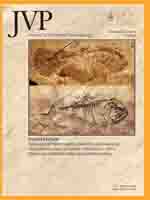How is the bone tissue in skeletal supports of a neonatal elephant organized, and how does this histological structure differ among the neonates of modern species, mammoths, and insular dwarfs? We used synchrotron X-ray microtomography (SR-µCT) to obtain high-resolution image-‘slices’ noninvasively, from the femoral and tibial diapbyses of neonatal African elephants, a young juvenile Asian elephant, Columbian mammoths, and California Channel Island pygmy mammoths. The results compared favorably in level of detail with histological sectioning, but without the shrinkage, distortion, or loss of tissue inevitable with histology. From the tomography images we were able to rank by ontogenetic stage specimens of taxa that are otherwise difficult to categorize because they vary greatly in size; from these images we observed that laminar fibrolamellar bone predominated and were able to quantify vascular patterns. Bones of the Columbian mammoth typically had the thickest and largest number of laminae, whereas the insular dwarfs were notable in their variability. A distinct change in tissue microstructure marks the boundary between prenatal and postnatal periosteal bone deposition. Qualitatively, patterns of early bone growth of elephantids resemble those in many young tetrapods that grow into large adults, including sauropod dinosaurs.
How to translate text using browser tools
1 July 2012
Noninvasive Histological Comparison of Bone Growth Patterns Among Fossil and Extant Neonatal Elephantids using Synchrotron Radiation X-Ray Microtomography
Amanda J. Curtin,
Alastair A. MacDowell,
Eric G. Schaible,
V. Louise Roth
ACCESS THE FULL ARTICLE

Journal of Vertebrate Paleontology
Vol. 32 • No. 4
July 2012
Vol. 32 • No. 4
July 2012




